Can I be Bengali in peace?
On being Bengali and Indian in the western world and recipes for my mango lassi chia seed pudding and aubergine dish.
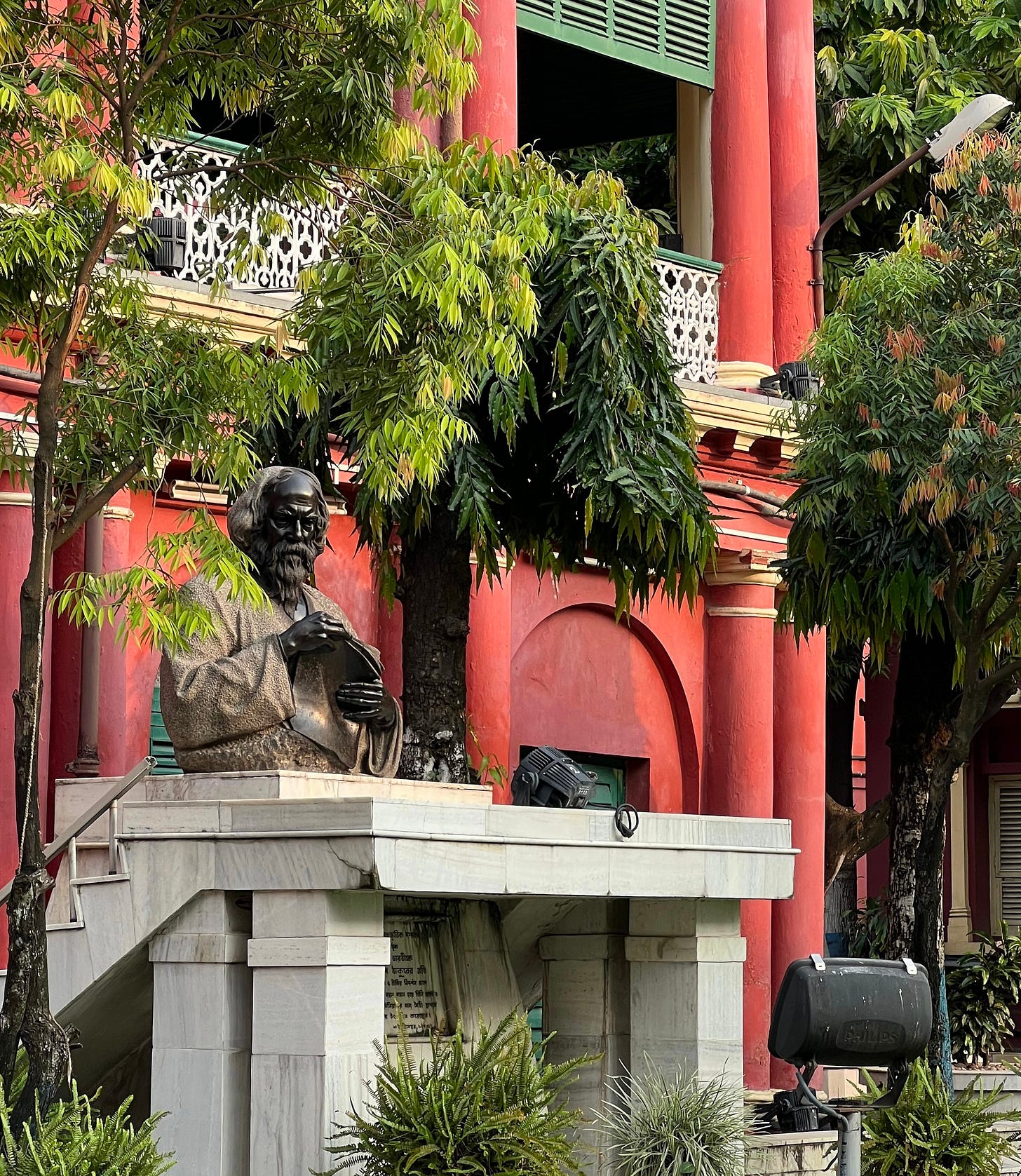
📩🍛 Recipes for this week are at the bottom of this newsletter!
Growing up Bengali in the West.
“You’re not a real Bengali”, “So are you Bangladeshi”, “How are you Bengali and Hindu”, “Why are your parents going to India, if you’re Bengali?” - those are just some of the questions that I would be on the recieving end of, growing up.
Grappling with the Bengali-Indian, Hindu identity in the West is not for the weak.
The constant interrogation of who I was slowly chipped away at me. For years, I had no idea how to answer the “where are you from” question.
I couldn’t be a Bengali in the eyes of many, primarily because the Bengali identity has become synonymous with being Bangladeshi in the West.
The one time I had enough courage to explain my identity to a fellow classmate while in secondary school, I was laughed at.
So, outside of my home, I was met with a torrential rain of ignorance, but inside of my home, my Bengali Indian identity was constantly reaffirmed.
My parents, in the middle of trying to exist and survive as immigrants in the West, reminded me of who I was and how proud I should be - even when I wasn’t willing to receive that message or didn’t feel proud of my heritage.
At home, Indian news was being blasted on the TV (by my dad), my mother was cooking quintessential Bengali food, and both of my parents were speaking a mixture of Bengali and Hindi.
But this just added to the confusion, especially because my experiences outside were not aligning with my experiences at home.
Luckily, in my post-schooling years, I stopped having to deal with the ignorance. In both my higher education and in my professional life, I met Indians and Bengalis who understood that the Bengali identity isn’t a monolith.
I wasn’t interrogated further; I was simply understood for both my Indian and Bengali identities.
It was a huge sigh of relief - I was finally seen between the layers.
Travelling to India, especially as an adult, gave me lots of assurance as well. I felt safer in my Bengali identity there than I did in the UK.
I love being from London, but there are parts of me that wish I had some of my upbringing in India, as it probably would have averted my adolescent identity crisis.
So, I have found peace in being me in between it all.
Note: Just want to note that I understand that Bangladeshi people also receive ignorant comments about their Bangladeshi identity, too - that fact is not lost on me, and hearing about their experiences has been upsetting. I believe that both sides have a part to play in this aggravation. I also want to note that the Indian diaspora in the West has also made the types of comments that I outlined at the outset of this post - this is in part because, in the West, the Indian identity is strictly viewed from the lens of North India.

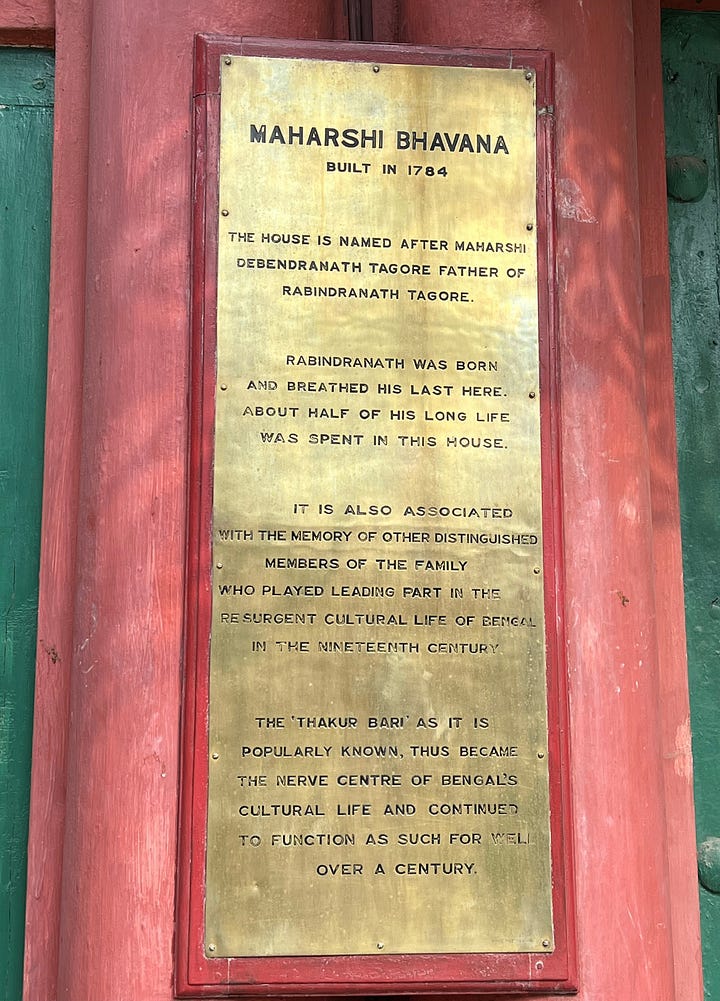
Online commentary that I wasn’t prepared for
What I wasn’t prepared for was suddenly finding myself in my 16-year-old body again, having to read comments under the videos I make, that follow the same sentiments of the comments I outlined at the beginning of this newsletter.
It has been a reality check. Because of the bubble I have built around myself, I had assumed that these types of views were less common, but they’re still pretty prevalent.
Suddenly, I had a feeling that I would have to start explaining myself again. Luckily, this feeling was fleeting.
Using food to root me in the layers of my identity
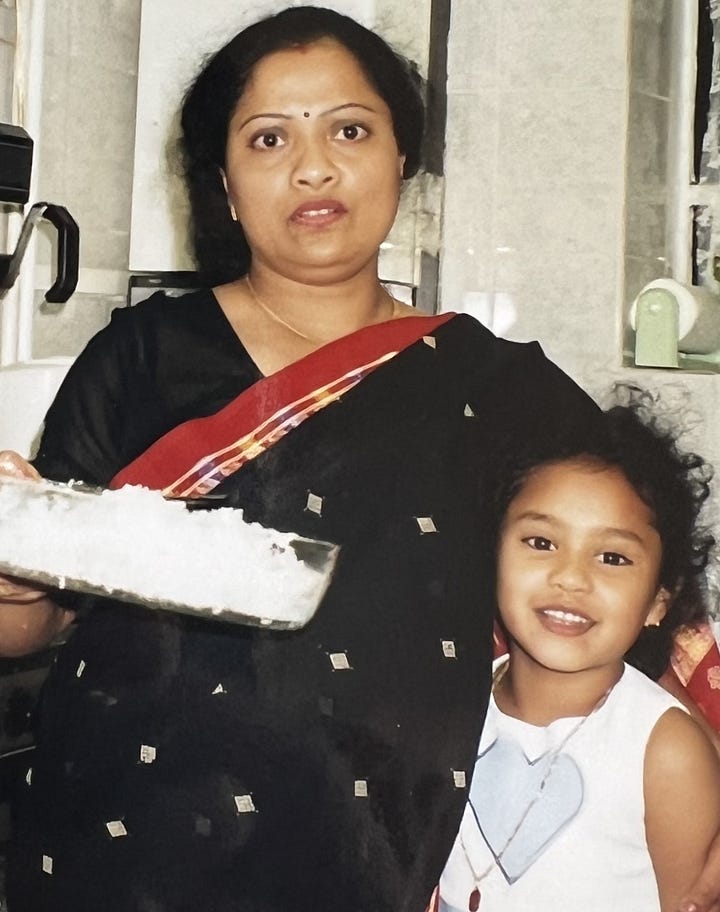
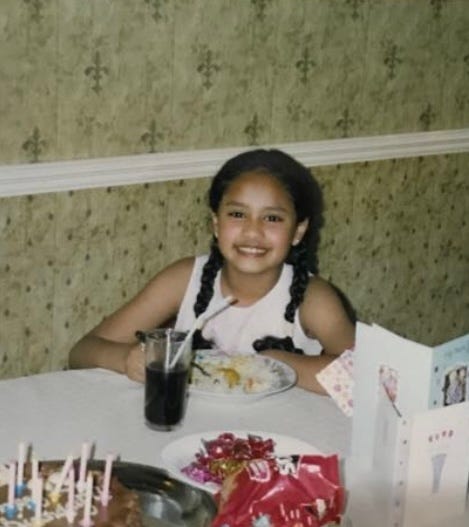
I didn’t realise it then, but the little version of me was constantly being anchored in her identity through food.
I would come home from the confusion imposed by the world, to immediately meet the smell of my mother tempering panch phoron for her mosur dal or the distinct and strong aroma of mustard oil being rubbed into fish, with some turmeric and salt.
Being totally honest, I wasn’t always over the moon to know we were having masoor dal for dinner again, but living in these culinary traditions was doing something to me.
They were strengthening a layer of me.
It was in these quintessential dishes that I found parts of myself.
In sickness, Aloo shedho (spiced mashed potatoes), with a hearty dose of mustard oil, was THE cure.
In curiosity, I’d spend hours in the kitchen with my mother, watching her swift yet precise movements as she prepared nourishing meals, in the process, discovering who the woman was behind the label of “mum”.
In admiration, I’d watch my aunties in India perfectly finesse the shapes of coconut shandesh (a Bengali dessert) and carefully pack them away for me to enjoy in London.
In all of these moments, I was tapping into a heritage that’s ancient and is now living through me. That’s how I learned to carry myself as an Indian woman - through tradition and heritage.
🍛 Recipes
🥭🍮 Mango lassi chia seed pudding
For a visual guide to the recipe, check my Instagram video here.
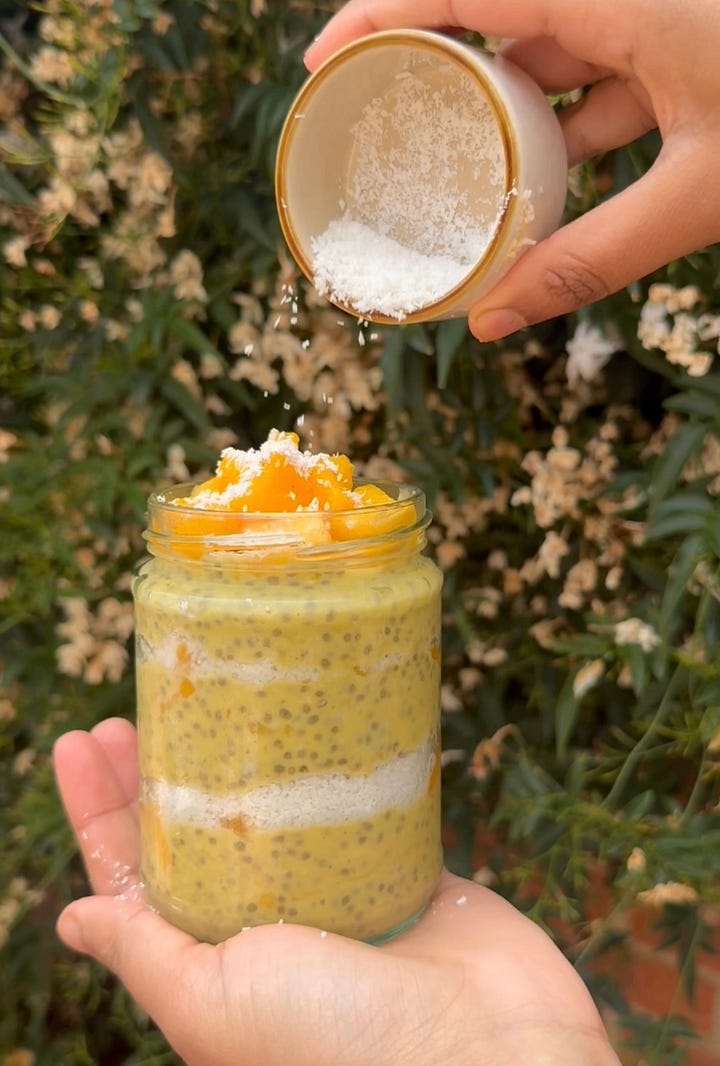
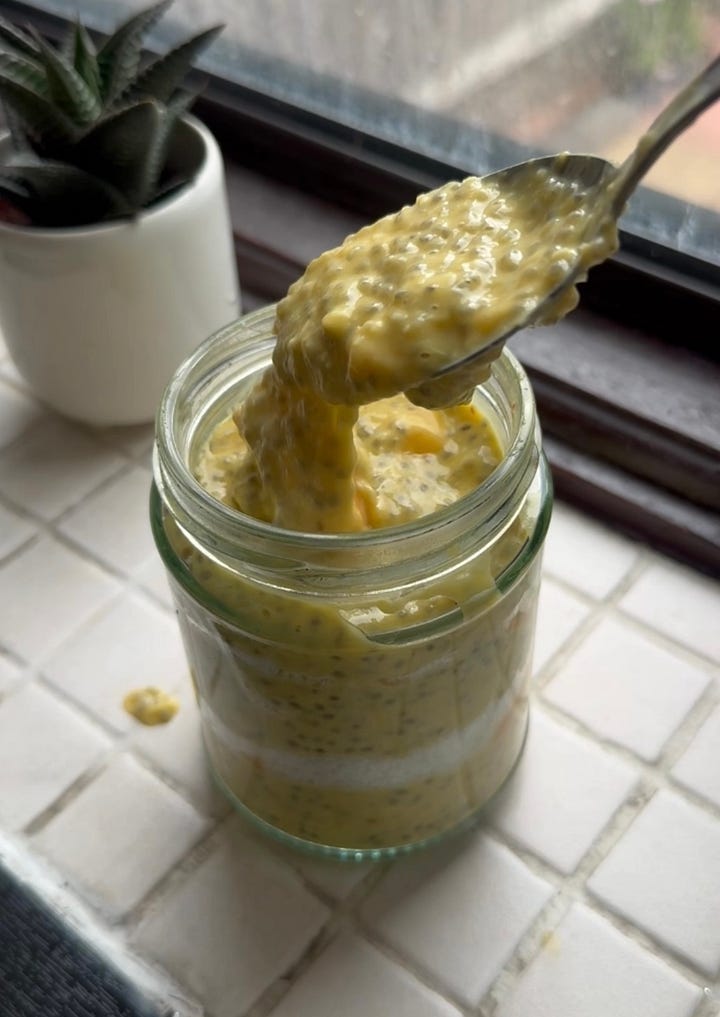
Ingredients
One mango chopped (I use Pakistani mangoes because I am absolutely obsessed with them).
You can either use the whole mango in your lassi mixture or you can set some small chunks aside for garnish and layering. You might need more than one mango if you choose to do this - it will depend on how big your mango is.
300ml milk of your choice (I use oat milk)
Dash of lemon juice
Tbsp of honey
3 tbsp of yoghurt
4-5 tbsp of chia seeds
Dessicated coconut
Instructions
In a blender, add your mangoes, milk, honey, lemon juice and yoghurt. Blend until you get the consistency in my video.
Add the chia seeds to the mixture and stir really well. Put that stirred mixture in the fridge for ten to fifteen minutes. Take it out of the fridge and stir again - this prevents clumping of the chia seeds.
In a jar (you can use an old jam jar, as I did), layer in a couple of spoons of your mango lassi chia seed mix and then some coconut and mango chunks. Repeat this process until you get to the top of your jar.
Fix the lid on tightly and place in the fridge either overnight or for 6 - 8 hours. Enjoy as a breakfast or a healthy dessert!
🍆🍅Begun pora (aubergine dish)
For a visual guide to the recipe, check my Instagram video here.
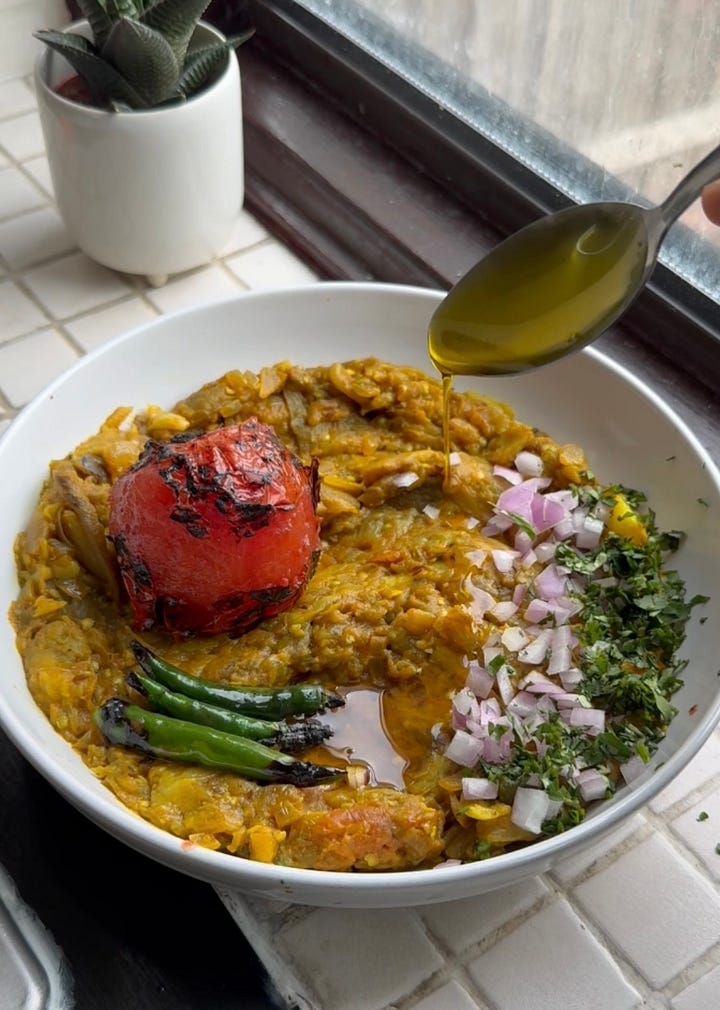
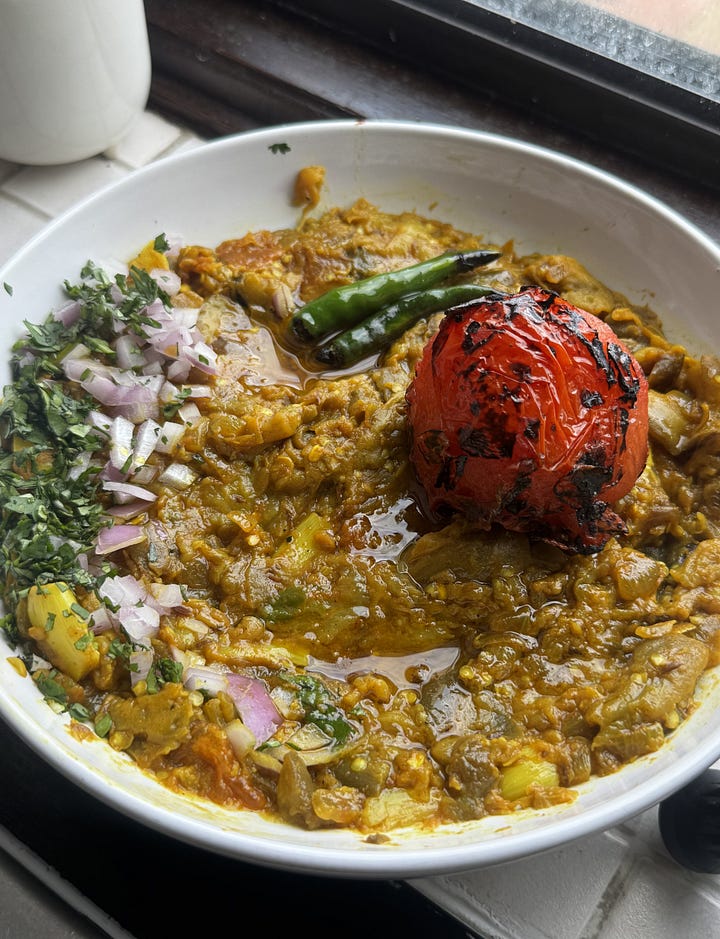
Ingredients
One aubergine (I used a large one, but use two small ones if you don’t have a large one to hand)
Two small tomatoes
4 - 5 cloves of garlic
3 - 4 green chillis
mustard oil - lots of it
spices: tsp Kashmiri red chilli powder, turmeric powder, coriander powder, cumin powder and a pinch of garam masala (I say a pinch because I don’t like it when my begun pora comes out super brown).
Cumin seeds
One whole small red onion or half of a big one
Coriander for garnish
Equipment
You can use a perforated pan to char your veg - it makes the process a lot easier. I have lost mine, so that’s why I didn’t use it!
Instructions
Cut slits into your aubergine and stuff them with a combination of unpeeled garlic and chillis. Coat the aubergine and tomatoes in about a tsp of mustard oil each.
char the aubergine on a medium-high heat for about 15 minutes or so. You want the aubergine to be cooked through and soft on the inside. While the aubergine is charring, flip it every 3 mins or so, such that it gets an even char. Do the same thing for the tomatoes.
I like to char one tomato and a couple of green chillis for garnish when plating, but this is optional.
Once both are charred, the aubergine and tomato should peel relatively easily.
Cut the head of the aubergine off, slice both the aubergine and tomato and combine very well.
In a pan, heat up about a tbsp of mustard oil and temper some cumin seeds. To that pan, add your diced red onions until they become translucent.
Add in all of your spices and some salt. Combine that well until the spices have cooked, and then add ALL of the aubergine tomato mixture. Combine REALLY well and fry together for about 10 - 15 minutes or so on a low heat. Ensure that you check for salt at this stage too.
Plate up and garnish with some chopped coriander, more chopped red onion and your charred green chillis and tomato. Enjoy with some roti or piping hot rice.



